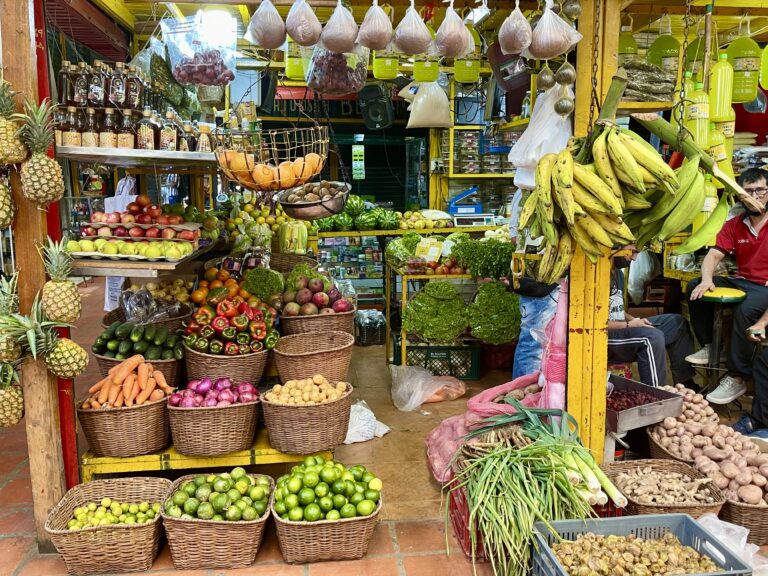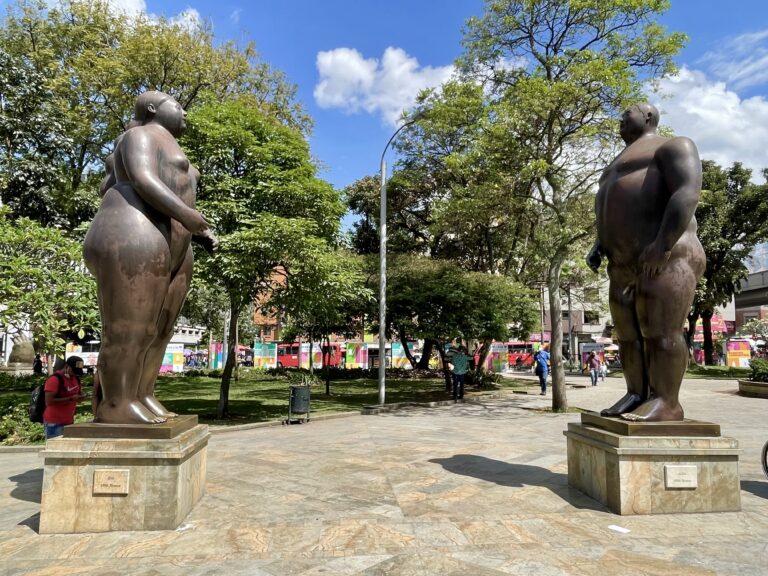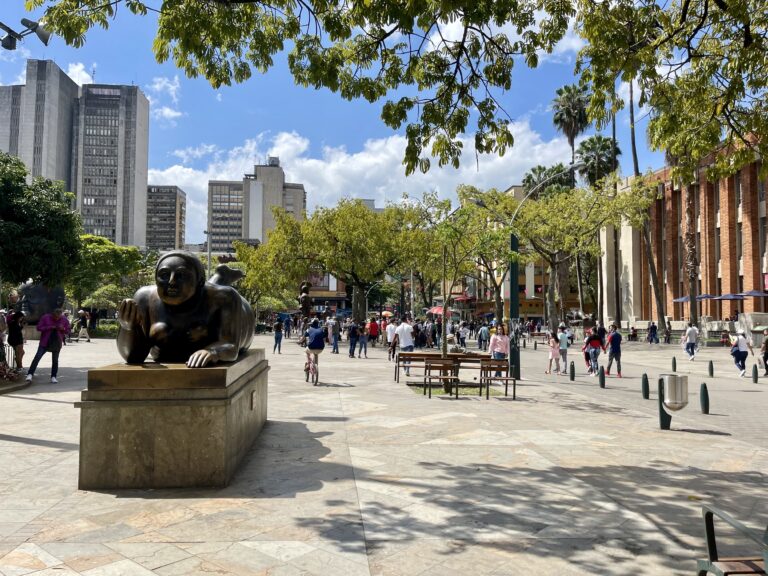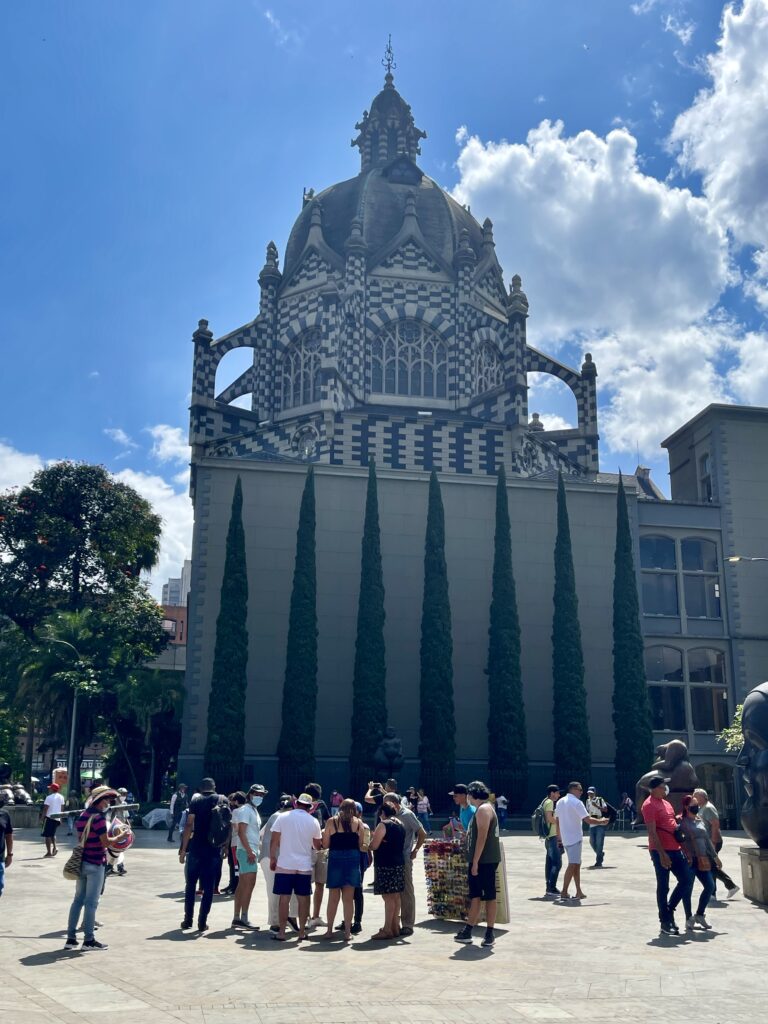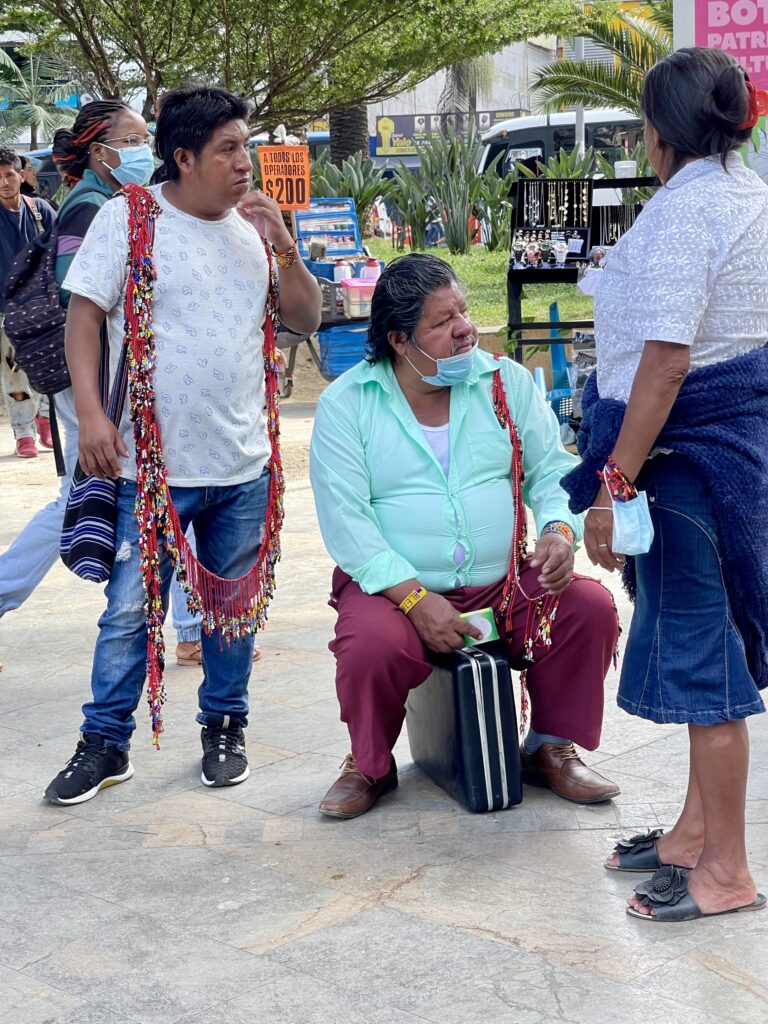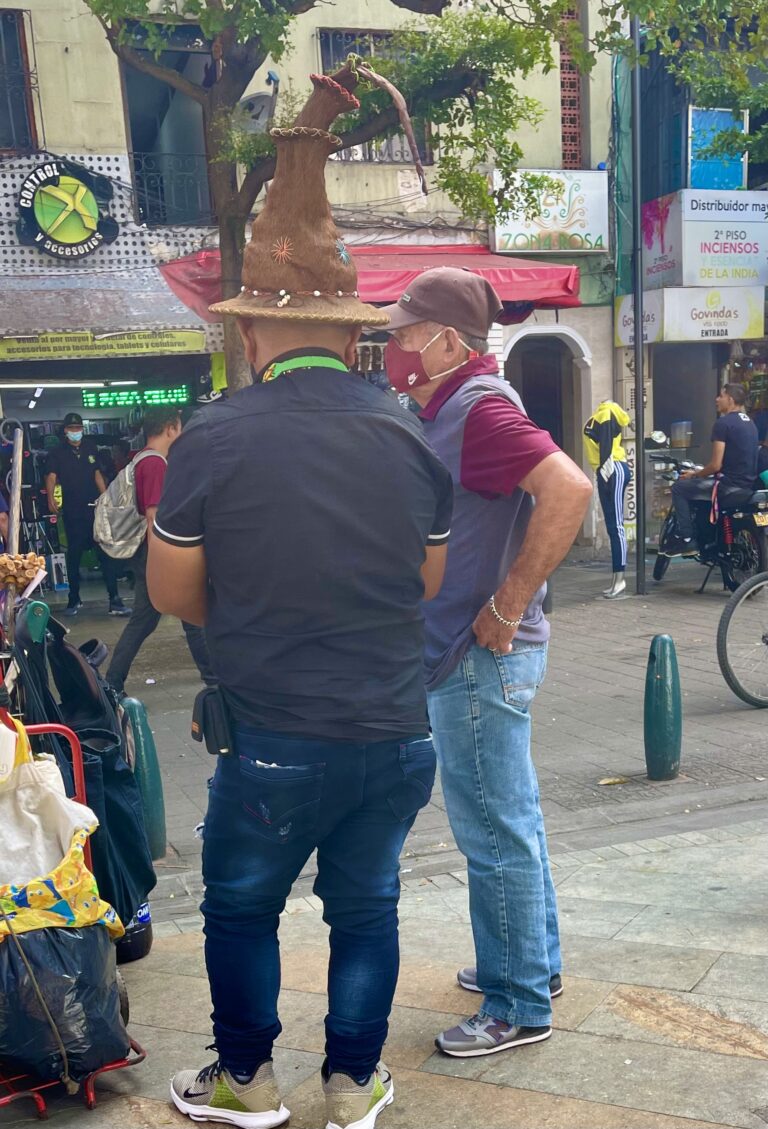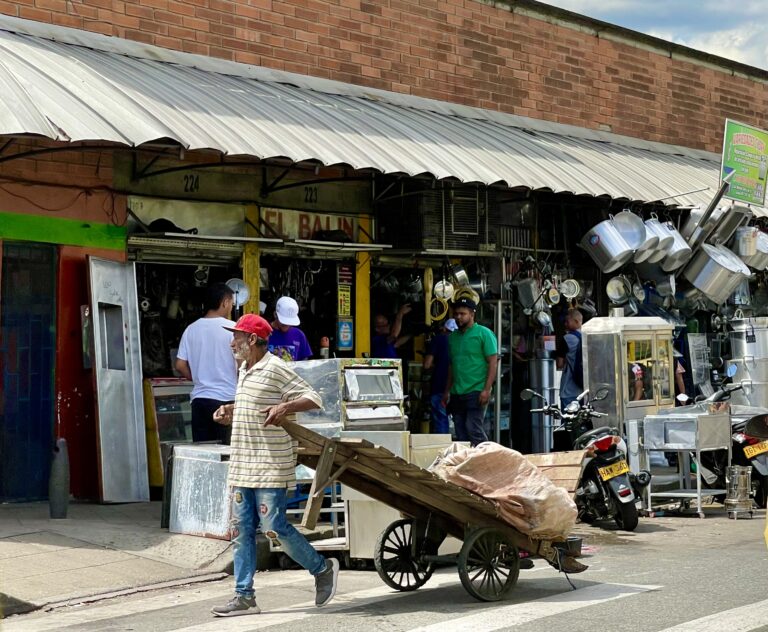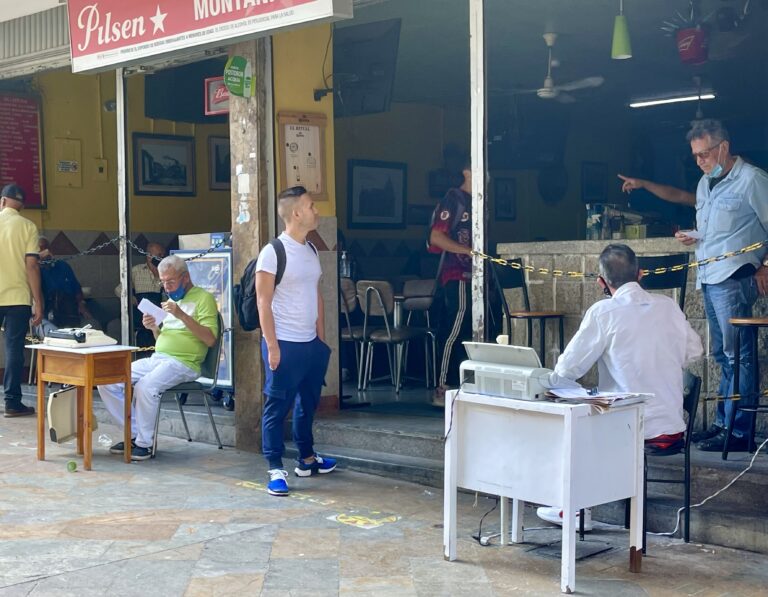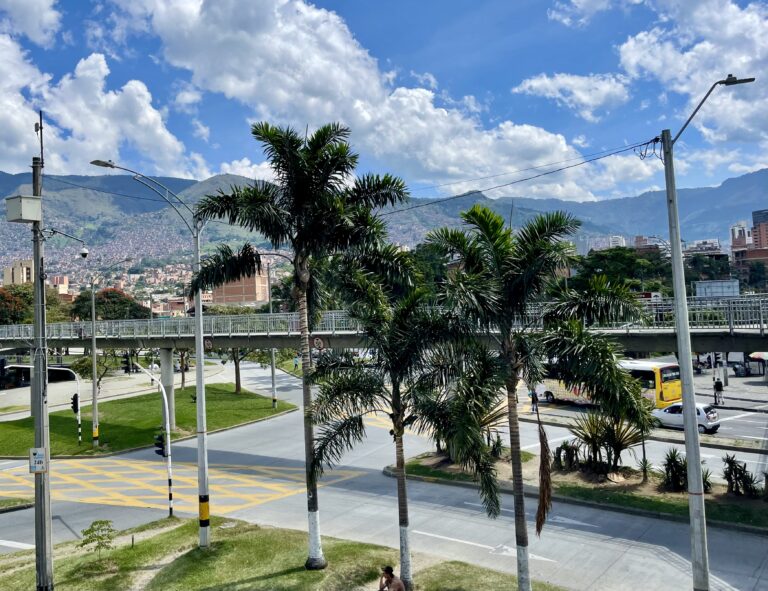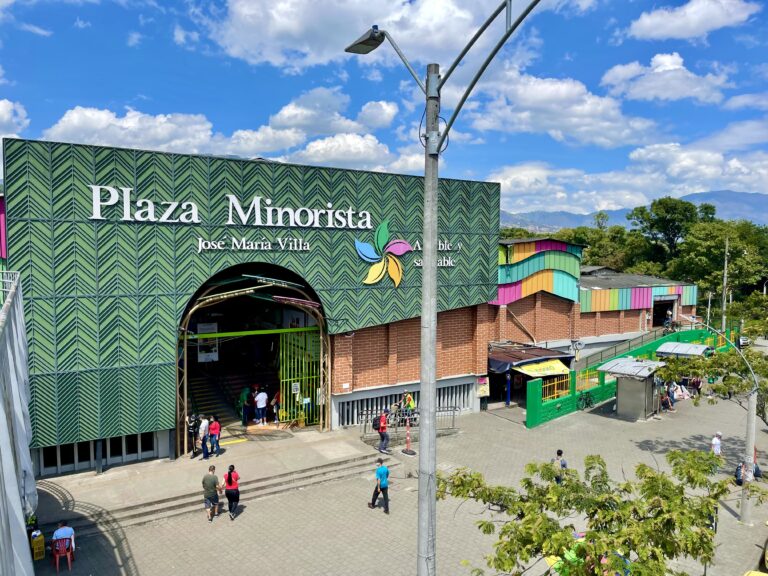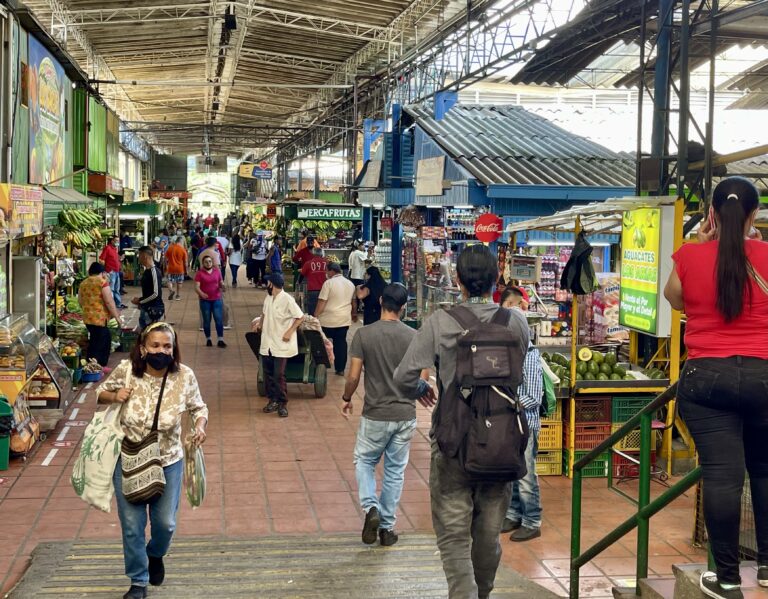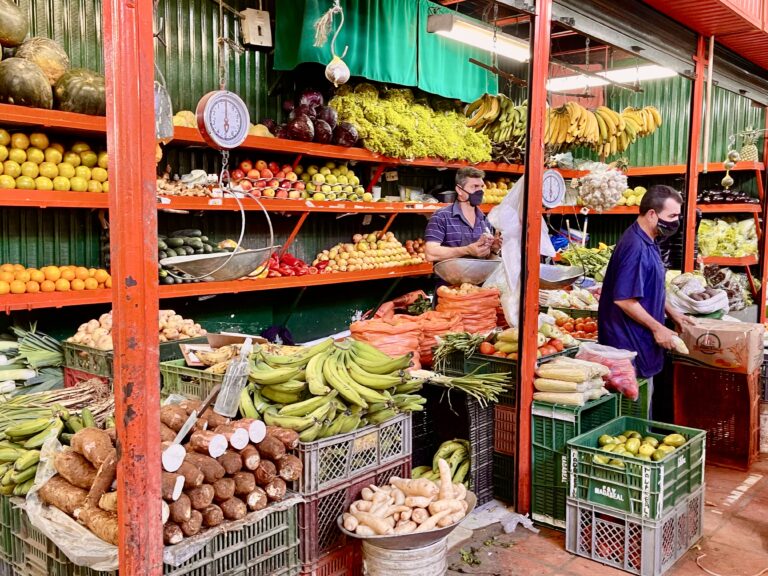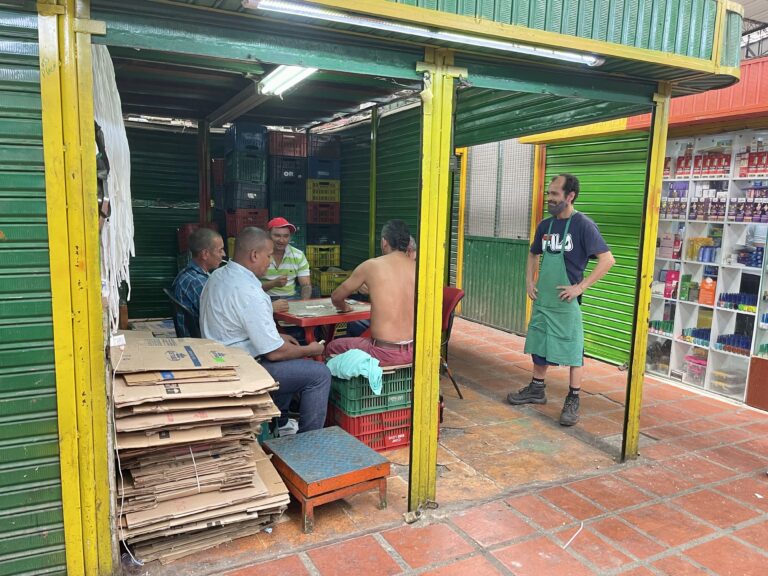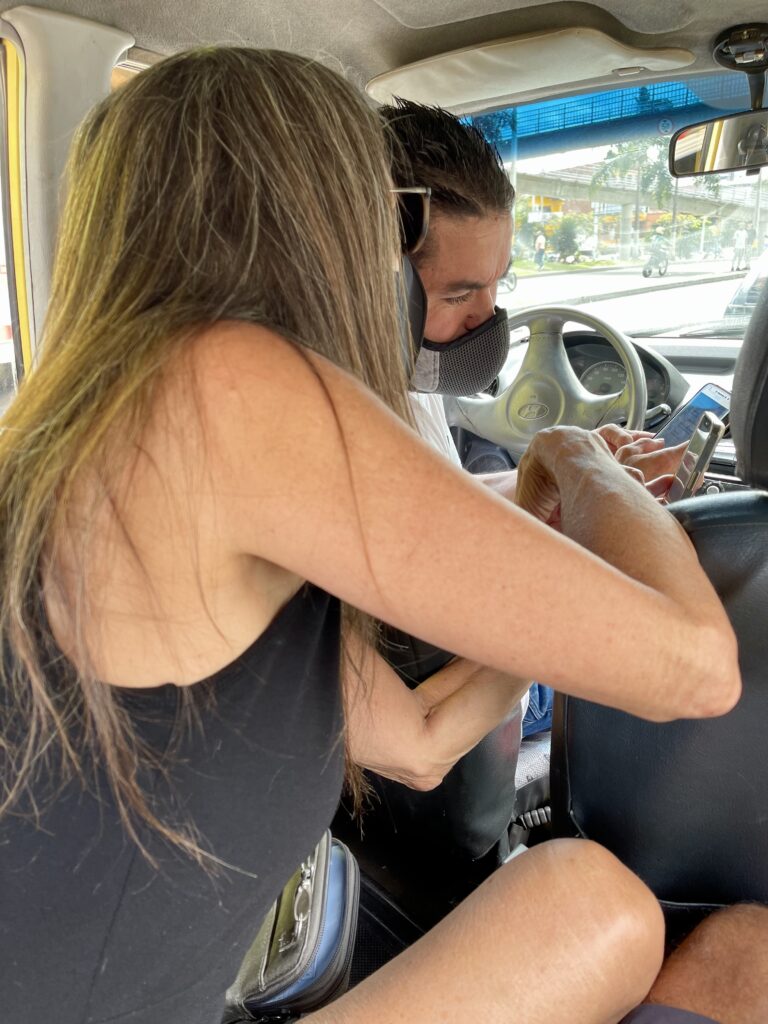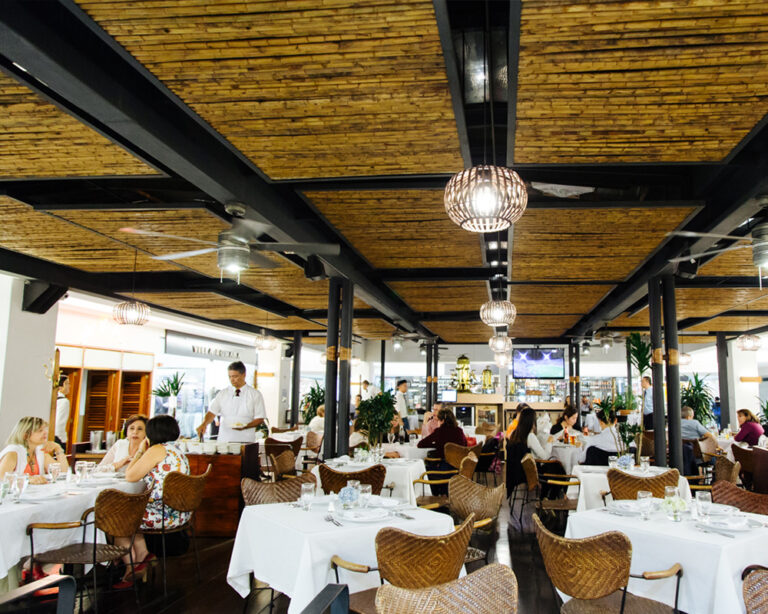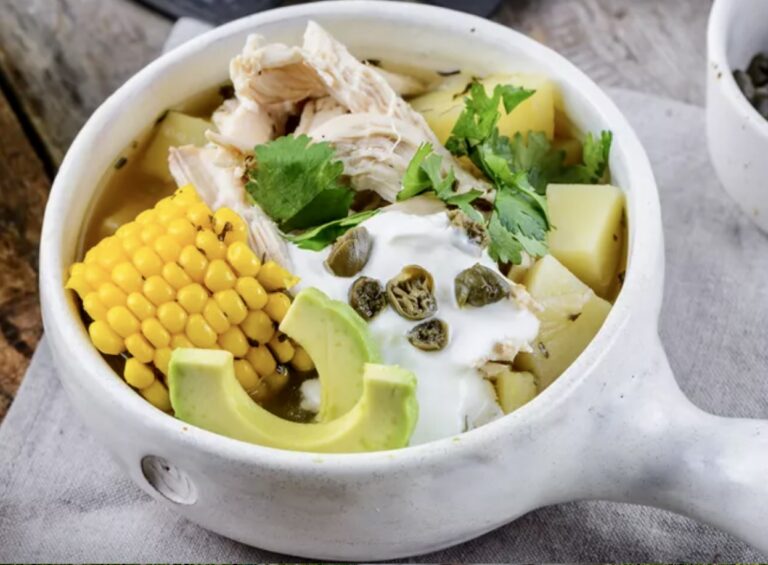January 20, 2022
The hotel had an excellent breakfast spread included with our room and it was the first time since Covid began that we’d seen a real buffet. I enjoyed lots of healthy foods, like muesli, a veggie omelet and fresh fruit juices, along with a few less-healthy choices. Meanwhile, Susan still managed to eat only a little—and vowed to sterilize every drop of drinking water for the rest of the trip, even though Medellin’s water is known to be perfectly safe.
After breakfast, we took an Uber to the Plaza Botero in central Medellin. Once there, we wandered around the large square where a dozen huge bronze statues –typically of very fat people – were sprinkled around. The sculptor, Fernando Botero, is Medellin’s (and perhaps South America’s) most famous artist.
According to our map, it was less than a half hour walk from Plaza Botero to Medellin’s famous indoor market, Plaza Minorista. What our map did not reveal was that we’d be walking through a decidedly sketchy area. It was our first solid day touring Medellin and we’d been warned that the city definitely had its share of petty thieves, something we don’t usually worry much about. Any place could be dangerous. When we visit another country (and some sections of big cities in the U.S.), we’re careful not to look wealthy, we don’t flash money around and we try to keep situational awareness, just in case. But so as to not tempt fate, we’d decided to leave jewelry, even Susan’s engagement ring that she very rarely removes, at home. Our smart watches, which provide health tracking, were the only exception.
But Medellin, despite its reputation as the center of cocaine drug cartels and record murders in the 1980’s and 90’s felt perfectly safe in the 2020’s. Even in the sketchy area, nobody bothered or even seemed to notice us. People were just going about their business.
After about twenty minutes walking along the streets, we navigated to a massive walking bridge that led first over a few quiet roads with stunning views of some of the city’s hills, and then continued over a road choked with traffic.
The bridge brought us to Plaza Minorista. The market was located in an even rougher part of town than the section we’d just traversed, but it was well-guarded and we felt safe. Plaza Minorista was colorful, noisy and fascinating, with hundreds of stalls throughout several floors selling almost any kind of local food and other products you could want.
The fruits and vegetables at the market looked so much better than the bred-to-travel-well-not-to-taste-good stuff in much of the U.S. It looked even better (and was far cheaper) than the fresh produce we enjoy at home in California.
When it was time to go, we tried to use our phones to hail an Uber but the signal was too weak. T-Mobile had given us free cellular data in Colombia but at only 2G – 3G speed, which is almost useless even with a good signal. Instead, we hailed a local taxi.
The taxi driver was surprisingly unfamiliar with the area. After Susan negotiated a price and used her GPS to help show him where to go, we got underway. It was the most dilapidated car we’d ever ridden in. The doors barely opened, the car was tiny and it was dirty inside. I could feel that the battered car had at least one bent wheel, which made me nervous because I knew we’d be getting on a highway. As the bungied hatchback door bounced behind us, the tiny car smoked and struggled and wobbled toward our hotel. I honestly wasn’t sure if the car would make it. The confused driver ignored Susan’s directions, got stuck in some traffic, and got lost a couple of times, but eventually we arrived to the relief of all of us.
Susan still wasn’t feeling well, so she finally decided to take some Imodium and Ciprofloxin and spend the rest of the day resting. Pro tip: Ask your doctor to prescribe Cipro before traveling abroad or anywhere else where traveler’s stomach might be an issue. It turned out to be a godsend for Susan.
While Susan stayed back in the room, I walked the two-mile round trip to the laundromat to retrieve our clothes, sweating as I climbed the hills of the El Poblado district of the city. Our laundry was ready as promised and the whole load set us back only US$3.50, washed, dried and folded.
Back at the room, I took another luxurious shower. Susan announced she was finally feeling well enough to eat but was still too weak to venture far.
So, we decided to go to the large mall adjoining the hotel for dinner where she’d read there was a very good white-tablecloth restaurant, Café Le Gris. The online menu showed they served chicken soup—exactly what Susan wanted for her first real meal in days. It turned out Susan’s chicken soup, ajiaco, is a well-known Colombian specialty. It was incredible—it included lots of tender chicken pieces, delicate local potatoes, pieces of corn on the cob, and avocado. We learned that ajiaco is considered a great hangover cure because the broth provides hydration and the potatoes provide potassium, and it’s often consumed in the middle of the night or for breakfast after a night of heavy partying. While Susan enjoyed her soothing soup, I had a chicken and mushroom entrée that was also excellent. It was one of our best, and again inexpensive, meals yet. We could eat only half of the giant portions and took them back to the tiny fridge in our room for lunch another day.
We noticed that unlike at U.S. malls, we saw no mall rats and it was obvious that higher income Colombians shopped and ate here. Colombians, we found, are proud of their appearance and dress well when they can afford to. I felt like I stood out wearing shorts and a t-shirt, but that’s the best I had, having only a small suitcase for a month’s worth of clothes. At least Susan had a hiking dress. Note to self: When travel plans include going to cities, try to pack something other than clothes designed for trips to the wilderness. Or endure the stares of the locals. Actually, they didn’t really stare, and in fact we often felt quite invisible in Colombia, probably because by now we were tanned and didn’t look so much like gringos.

